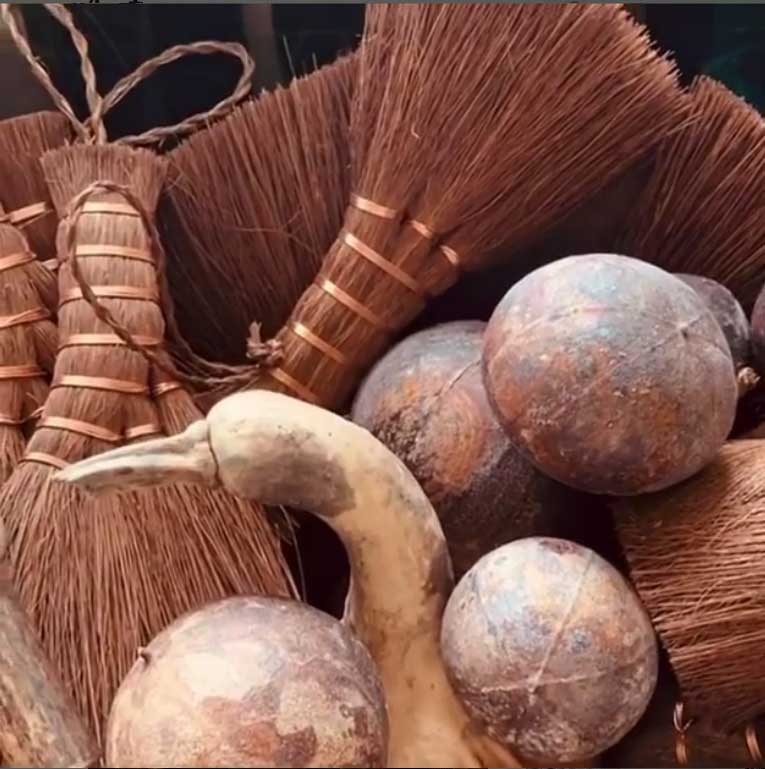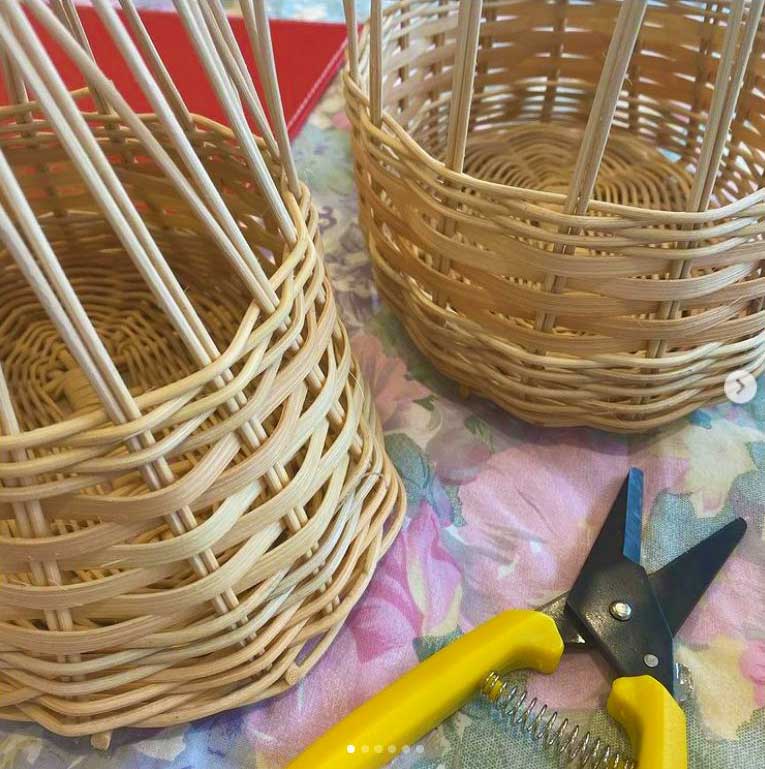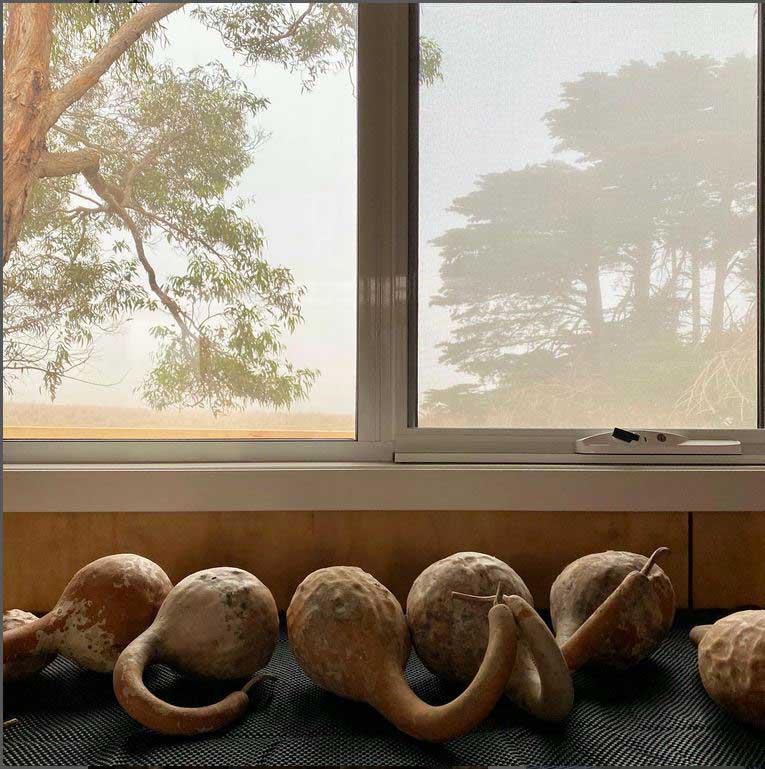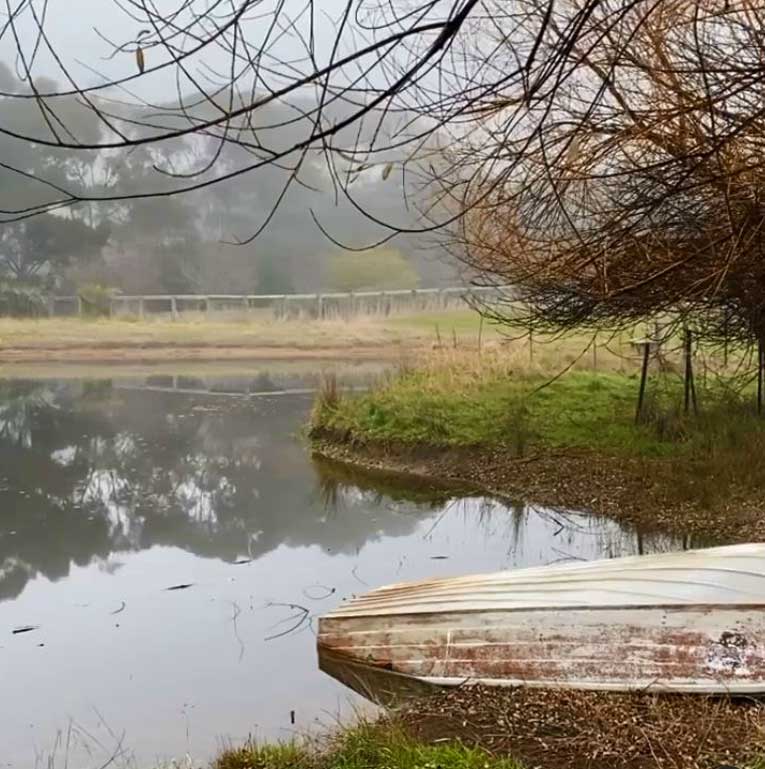
About Craftsteading
Save money, relax and find your creativity by making stuff out of plants. And even monetise your hobbies!
Craftsteading is about self-sufficiency, making things with your hands, lost trades and bushcraft. It’s about prepping for hard times or relaxing with mindful handcrafts.
We value traditional skills that are sometimes lost or forgotten, the very same methods your ancestors used.
What you’ll learn
When you join like-minded craftsteading fans, you’ll learn how to make useful, beautiful things to amaze your friends and family. Without spending much money!
Grow the materials in your own garden. It’s cheaper, more satisfying, sustainable and carbon negative!
Or forage in the wild for raw materials.
And if you’re not into gardening or foraging – no stress, you can buy craftsteading supplies right here.

Sally Gardens shows you how to use plants to make a wide range of beautiful and useful things, such as brooms, whisks, jewelry, bags, baskets, dyes, cordage, containers, soaps, lights, candles and more.
You can make containers from gourds, jewelry from seeds called Job’s tears, baskets from cattail bulrushes and brooms from sorghum.
Follow our blog to keep up to date.
What’s Craftsteading?
Craftsteading is for –
Gardeners and farmers
Makers and craftspeople
Cooks and chefs
Home brewers and broom makers
Survivalists and Permaculturists
Bushcrafters
Geeks and nerds
Weavers and spinners
People who love natural fibers
Back to basics and simple living enthusiasts
Woodworkers and Do It Yourselfers
Why You’ll Love Craftsteading
There is never been a better time to live sustainably, ethically, and self-sufficiently.
- Enjoy mindful, traditional handicrafts
- Learn calming, satisfying skills
- Make your own beautiful & useful things
- Grow your own household items
- Find out how easy it is to be frugal and thrifty
You’ll find that making things with your hands is wonderfully relaxing, mindful and satisfying.
We craftsteading fans support artisans and try to be as independent as possible from mass-produced, manufactured items. We aim for sustainability and self-sufficiency.
Unique products
Craftsteading products are not uniform in appearance, because they’re hand-made. When you receive yours, they may vary slightly from the dimensions and colors shown in this store, but their uniqueness is what sets them apart from mass produced goods.

Our tagline
Because we love making beautiful and useful stuff out of plants, our craftsteading tagline is, “Use plants to make anything”. We agree that yes, this is a bit over-the-top, and it probably should be “Use plants to make almost anything,” but it’s not too far off the mark!
Plants have been used to make a mind-boggling array of things. Even airplanes!
People constructed the first airplanes from wood, linen (from flax plants), cotton (from cotton plants) and cellulose, a material that’s extracted from plant fibers.

Happy making!
~ Andy and Sally Gardens
“Exciting classes”
Sally’s podcasts are great. Her blog posts are educational and lot of fun too, and you learn how to make something lovely with your own hands.
Jess
“Endless possibilities”
We are amazed with everything we’ve learned at Mill Cottage. Who would have guessed you can grow so many useful items in your home garden!
Phil
“Traditional crafts”
I’ve always wanted to learn how to make things the way our ancestors made them, instead of buying them in the shops.
Monica
Mill Cottage

We call our little workshop “Mill Cottage”. It is here, near a small coastal village in a pleasant, temperate climate, that we practice, teach and learn more about basketry, broom-making, woodworking and other creative crafts and “lost trades”.
We also installed a drying shed to store gourds and dried flowers and to hang natural plant fibers such as reeds, rushes, broom-corn, hazel rods, grapevines, Watsonia leaves, dogwood sticks etc.
At Mill Cottage, the home of Craftsteading, we love making beautiful and useful stuff out of plants. We grow fiber plants for weaving and basketry, dye plants, gourds and other plants with a wide range of uses.
We like to help other craftsteading fans by offering tools and supplies, and even finished products you don’t have time to make, or that you’d like to use as models or templates for your own creations.
Wondering about shipping times? Find out more here.

Uses for plants
Many plants are edible or medicinal, and many can be used in other craftsteading applications.

From “Plants for a Future“:
Other Uses
Plants also provide us with fibres for making cloth, rope, paper etc. There are numerous dyes obtained from plants with which to colour our fabrics. Many plants have oil-rich seeds and these oils can be extracted when they have a variety of uses. Many of them are edible and they can also be used as lubricants, fuel, for lighting, in paints and varnishes, as a wood preservative, waterproofing etc.The articles below highlight some of these uses.
Alternative Lighting: Plant Oils and Waxes
Fibre Plants
Soap Plants
Vegetable Oils
Building Materials
Insulation Providing insulation against extremes of temperature, sound or electricity.
Pipes For carrying water etc.
Pitch Used for waterproofing, in paints etc.
Plaster Used for covering walls.
Roofing Used to give a waterproof roof to buildings. See also Thatching.
Thatching Used for making thatched roofs.
Clothing
Buttons Plants that you can use as buttons. Not including making buttons from wood.
Darning ball
Fibre Used for making cloth, rope, paper etc.
Latex A source of rubber.
Leather Substitutes, that is.
Needles Used for sewing, darning etc.
Pins Used as needles and pins in sewing etc. Also used to lance boils, extract splinters from the skin etc.
Raffia A substitute for that material.
Starch Used as a fabric stiffener.
Stuffing Used in making soft toys, mattresses, pillows etc.
Tannin An astringent substance obtaied from plants, it is used medicinally, as a dye and mordant, stabilizer in pesticide etc.
Weaving Items such as grass and palm leaves that are woven together for making mats, baskets etc. See also Basket making and Fibre.
Dyes, paints, inks and paper
Blotting paper Plant that can be used to make blotting paper.
Dye Plants that provide dyes.
Ink Plants that can be used as an ink.
Mordant Used for making a dye more permanent, it also affects the colour of the dye.
Paint Plants used directly as a paint. Does not include oil plants and dyes that can be used as ingredients in paints.
Paper Related to the entry for Fibre, these plants have been specifically mentioned for paper making.
Pencil A couple of plants especially mentioned for making the tubes that pencil leads fit into.
Size Used on materials, paper etc to give a surface that will take ink, dyes etc.
Fertilisers
Compost Plants used for activating compost heaps, providing biomass for composting, using as instant compost etc.
Fertilizer Provides a concentrated solid plant food.
Green manure Fast-growing plants that can be used to increase the fertility of the soil.
Liquid feed Plants that can be used to make a liquid fertilizer.
Potash Used for making glass, soap and as a fertilizer.
Fire and lighting
Alcohol Used for fuel etc. (this is wood alcohol, it is not the sort that can be drunk.
Biomass Provides a large quantity of plant material that can be converted into fuel etc.
Charcoal Used for fuel, drawing, deodorant, filter, fertilizer etc.
Friction sticks Used for starting fires when there are no matches.
Fuel Usually wood, plant materials that have been mentioned as being a good fuel.
Kindling Plant material that burns easily and can be used for starting fires.
Lighting Plants that can be used as torches etc. See also Oil and Wax.
Oil Vegetable oils have many uses, as lubricants, lighting, soap and paint making, waterproofing etc. This does not include the edible oils unless they are also mentioned as having other uses.
Tinder Used for starting fires. See also Kindling.
Wax Used for making candles etc.
Wick Used as a wick for candles, lamps etc.
In the bathroom
Baby care Various plants that can be used in place of items such as nappies.
Cleanser For various materials. Perhaps best included under separate headings.
Cosmetic Used to improve the physical appearance of a person.
Cotton wool Plants that can be used as substitutes for cotton wool.
Deodorant A pleasant smelling plant that is used on the body to mask the human smell.
Disinfectant Plants used for disinfecting.
Essential Essential oils that are used in perfumery, medicines, paint solvents, insect repellents etc.
Hair Plants used as hair shampoos, tonics, to treat balding etc.
Resin Used in perfumery, medicines, paints, soap making etc. This also includes turpentine, which is extracted from many resins and used as a preservative, water-proofer etc.
Soap Plants used directly as a soap substitute.
Soap making Plants used as an ingredient in making soaps. Does not include the essential oils, dyes and oils that are also used in making soap.
Teeth Plants used to clean and care for the teeth.
In the Garden
Fencing Plants that can be used for fencing.
Fire retardant Plants that do not easily burn and can be used in barrier plantings to limit the spread of forest fires.
Hedge Plants that can be grown as hedges.
Mulch Used for covering the ground to conserve the nutrients in the soil.
Pioneer Plants, usually trees and shrubs, that can be used to reforest land.
Plant breeding Used in producing new species of plants or improved varieties.
Plant support Usually bamboos, used as canes in the garden for holding up plants.
Rooting hormone Substances that can be used to promote the production of roots in plant cuttings.
Rootstock Plants used as the rootstock for grafting scions onto.
Shelterbelt Wind resistant plants than can be grown to provide shelter in the garden etc.
Soil conditioner Plants grown to improve the structure of the soil. See also Green manures.
Soil reclamation Plants that can be grown in such circumstances an the spoil tips of mines in order to restore fertility.
Soil stabilization Plants that can be grown in places such as sand dunes in order to prevent erosion by wind, water or other agents.
Companion Companion planting is the careful placement of plants (especially vegetables and herbs) which have been shown to have beneficial effects on one another.
Fodder Food given to the animals (including plants cut and carried to them) rather than forage for themselves.
In the home
Bedding Used as a lining for sleeping on or putting fruits etc on.
Besom A type of broom.
Brush Used for cleaning clothes, as a paintbrush etc.
Incense Aromatic plants that can be burnt to impart a pleasant smell, repel insects and disinfect closed areas.
Lining Used for lining boxes, baskets etc so that fragile items can be more safely carried in them.
Packing Used as a filler in boxes etc in order to protect the contents.
Porcelain
Pot-pourri Aromatic plants used to impart a pleasant smell to an area. Can this be grouped with incense or essential oil?
Scourer Used for cleaning pots, pans, plates etc.
Strewing Plants, usually aromatic, that are strewn on the floor to give a nice smell, repel insects etc.
String Plants that can be used for string or can be easily made into a string. See also Fibre. Plants for ropes may be included.
Cut flowers Cut flowers are flowers or flower buds (often with some stem and leaf) for decorative use.
Houseplant A plant grown indoors for decorative purposes.
In the kitchen
Bottles Plants that can be used as bottles.
Containers Plants, such as gourds, that can be used as containers. Does not include baskets or containers made from wood.
Cork Including any plants used as a cork substitute. Cork is used for insulation (sound or heat), fire-retardant, bottle stops etc.
Filter Used to strain out particles from liquids.
Fruit ripening Substances that promote the premature or rapid ripening of fruits.
Gum Gums have a wide range of uses, especially as stabilizers, emulsifiers, thickening agents, adhesives etc.
Pectin A substance that is used to thicken jams etc and as a culture medium in laboratories.
Straw For drinking with.
Waxed paper Substitutes that is.
Other Uses
Broom Used for sweeping the floor etc.
Litmus Used for testing whether a substance is acid or alkaline.
Microscope
Miscellany A rag-bag of items that are difficult to categorise.
Musical Specific mention of plants used as musical instruments. Does not include the various woods that can be used for making musical instruments.
Pollution Plants used to combat pollution.
Repellent Plants that are said to deter but not necessarily kill various mammals, birds, insects etc.
Weather forecasting A few plants that are supposed to help us forecast the weather.
Weather protection Plants that can be used to give the body protection from severe weather.
Pesticides
Fungicide Arrests the growth of, or kills, fungi.
Herbicide Plants or plant extracts that can inhibit the growth of other plants.
Insecticide Kills insects.
Parasiticide Kills external body parasites such as hair lice.
Woodwork and other crafts
Adhesive Glues.
Basketry Plant used in making baskets and other items such as chairs. Includes plants that are only used as an ornamental addition.
Beads Used as necklaces etc.
Furniture A few miscellaneous uses that do not fit easily into other headings.
Lacquer A type of varnish.
Nails A few woods are tough enough to be used in place of metal nails in certain circumstances.
Polish Plants used to give a shine to metals, wood etc.
Preservative For food, or for treating wood, ropes etc.
Rust Plants that can be used to prevent or treat rust.
Sandpaper Plants used to smooth rough wooden surfaces by means of abrasion.
Varnish Plants that can be used as a varnish without any special treatment. Does not include varnishes made from oils etc.
Waterproofing Does what it says. See also Pitch and Oil.
Wood A list of the trees and shrubs that are noted for having useful wood.
Find out more about useful craftsteading plants at Plants for a Future.
